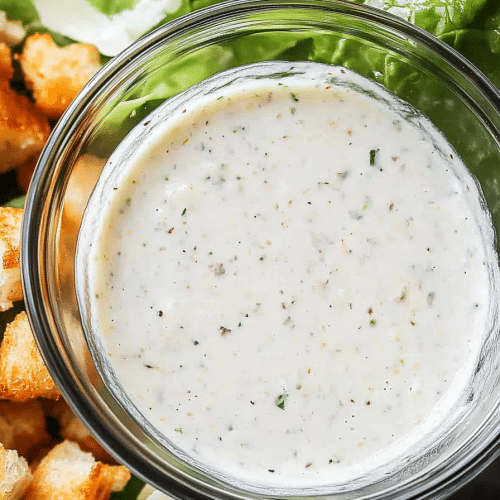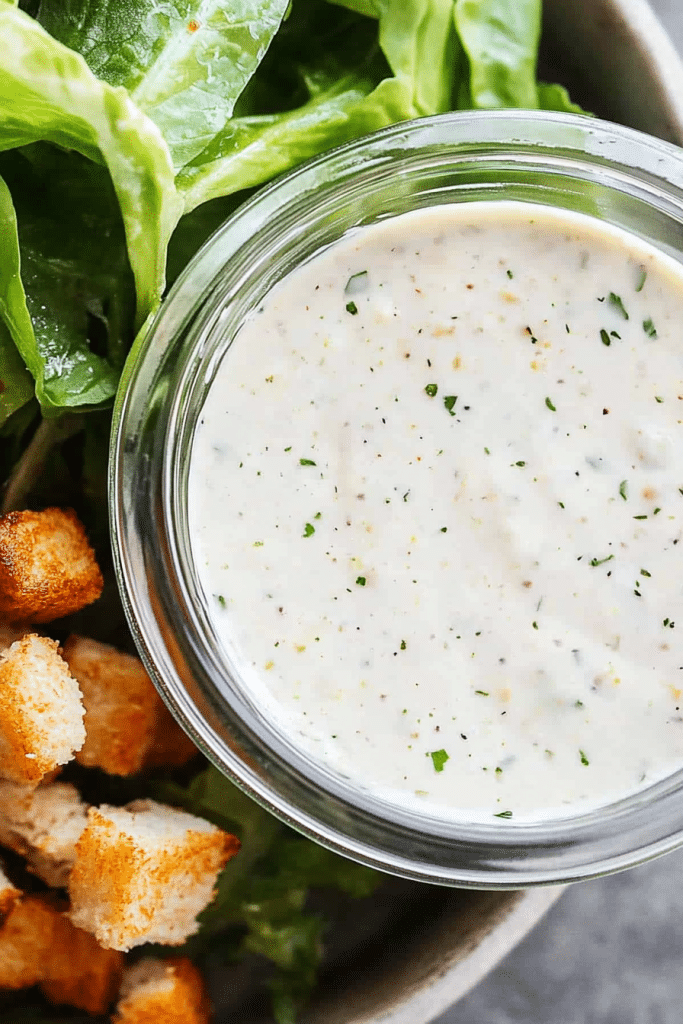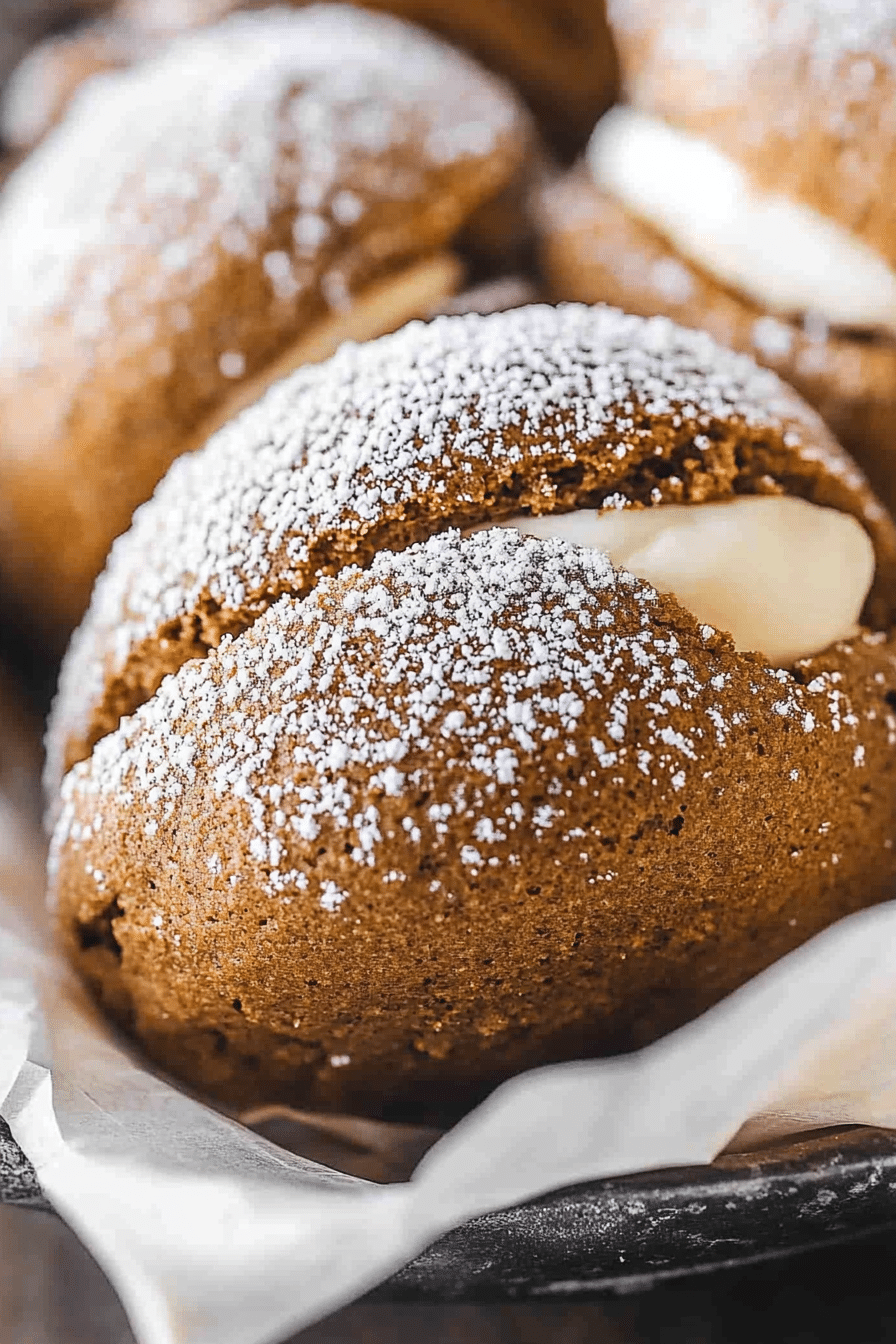You know those nights when you’re staring into the fridge, and the thought of making anything from scratch feels like climbing Everest? Yeah, I’ve been there. But lately, there’s one little magic potion I whip up that saves the day, every single time. It’s my go-to homemade caesar dressing, and trust me, it’s so much more than just a salad topper. It’s like sunshine in a jar, a creamy, dreamy embrace that makes even the simplest greens feel like a gourmet meal. Forget those watery, bland store-bought versions; this is the real deal, bursting with flavor and made with love. I remember my mom making something similar when I was a kid, and the aroma alone used to fill our kitchen with such warmth. Now, making this homemade caesar dressing is my own little ritual, a way to connect with that feeling and share something truly delicious with my own family. It’s incredibly simple, but the results? Absolutely spectacular. It’s the kind of thing that makes people ask, “What’s your secret?” and you can just smile because you know it’s something you made yourself.
Thank you for reading this post, don't forget to subscribe!What is a Caesar dressing?
So, what exactly *is* this glorious concoction we call homemade caesar dressing? Think of it as a creamy, tangy emulsion that’s a far cry from the bottled stuff. At its heart, it’s a beautiful marriage of rich egg yolks, pungent garlic, salty anchovies (don’t let them scare you!), bright lemon juice, and a touch of Dijon mustard, all brought together with good quality olive oil. Some folks add a splash of Worcestershire sauce for an extra layer of umami, and I’m definitely in that camp! It’s traditionally made using raw egg yolks, which gives it that incredible velvety texture and luxurious mouthfeel. But don’t worry if raw eggs give you pause; I’ve got a little trick up my sleeve for that later! Essentially, it’s a sophisticated vinaigrette that’s so much more than the sum of its parts. It’s the dressing that dreams are made of, turning humble romaine lettuce into a dish fit for royalty.
Why you’ll love this recipe?
Honestly, where do I even begin with why I adore this homemade caesar dressing recipe? First off, the flavor is just *unbelievable*. It’s this perfect symphony of tangy, savory, garlicky goodness that hits all the right notes. It’s so much more complex and vibrant than anything you’ll find in a plastic bottle. Then there’s the sheer simplicity of it. I can honestly whip this up in about five minutes flat, which, let’s be real, is a lifesaver on those crazy weeknights when dinner needs to be on the table pronto. And the cost? So much more budget-friendly than buying pre-made dressing, especially when you use staples you probably already have in your pantry. What I love most about this homemade caesar dressing is its incredible versatility. It’s obviously phenomenal on a classic Caesar salad, but I’ve also used it as a dip for crudités, a sauce for grilled chicken or fish, and even as a binder for potato salad. It’s a true kitchen chameleon! I’ve experimented with other creamy dressings, like my beloved avocado ranch, but this Caesar always holds a special place because of its iconic, craveable taste. It’s the kind of recipe that makes you feel like a culinary rockstar, even when you’re just throwing ingredients into a bowl.
How do I make homemade Caesar dressing?
Quick Overview
Making this homemade caesar dressing is surprisingly straightforward. You’ll essentially be emulsifying a few key ingredients into a rich, creamy dressing. The beauty of making it yourself is that you control the quality of each component, leading to a vastly superior flavor. It’s all about combining the right elements in the right way to achieve that perfect balance of tang, creaminess, and savory depth. You really can’t mess this up, and the speed at which you can go from pantry staples to this glorious dressing is truly astounding. It’s the ultimate shortcut to elevating any meal.
Ingredients
For the Main Dressing:
2 large egg yolks: Use the freshest eggs you can find. I always opt for pasture-raised if possible, as I find they have a richer flavor and color. If the idea of raw eggs makes you uneasy, don’t fret! I’ll share a secret for a pasteurized version soon.
2 cloves garlic, minced: Fresh garlic is non-negotiable here! I like to mince it very finely or even make a paste by sprinkling a little salt on it and mashing it with the side of my knife.
2-3 anchovy fillets, mashed into a paste: This is where the magic happens! Please, please don’t skip this. They melt away and provide an incredible depth of flavor, not a fishy taste. Start with two and add a third if you’re feeling bold.
1 tablespoon Dijon mustard: This adds a subtle tang and helps emulsify the dressing.
2 tablespoons fresh lemon juice: For brightness and acidity to cut through the richness. I always zest about half a lemon before juicing it and add it in for an extra punch of citrusy aroma.
1/4 cup grated Parmesan cheese: Freshly grated is key! The pre-shredded stuff often has anti-caking agents that can make your dressing grainy.
1/2 cup extra virgin olive oil: A good quality olive oil makes a difference here. You can use a lighter olive oil or a blend if you prefer a milder flavor.
Salt and freshly ground black pepper to taste: Always season at the end!
For the Optional Kick:
“New family favorite! This Best Homemade Caesar Salad Dressing was so flavorful and ridiculously easy. Crowd-pleaser for sure.”
1 teaspoon Worcestershire sauce: Adds another layer of savory complexity. It’s one of those secret ingredients that really makes this dressing sing.
Step-by-Step Instructions
Step 1: Prepare Your Flavor Base
In a medium-sized bowl, combine the minced garlic and the mashed anchovy fillets. I find that using the flat side of my chef’s knife to mash them together on a cutting board works wonders. You want to create a smooth paste. This initial step is crucial because it allows the garlic and anchovies to really meld their flavors together before you add the other ingredients. It’s the foundation of that signature Caesar taste.
Step 2: Whisk in the Emulsifiers
To the garlic-anchovy paste, add the egg yolks, Dijon mustard, and fresh lemon juice. If you’re using the zest, now’s the time to add it too! Whisk everything together vigorously until it’s well combined and starting to look a little lighter in color. This is where you start building the base for that creamy texture. Don’t worry if it looks a bit curdled at this stage; it will all come together.
Step 3: Slowly Stream in the Oil
This is the most important step for achieving a beautifully emulsified dressing. While whisking continuously (I often use an immersion blender for this if I’m in a hurry, but a whisk works perfectly!), start adding the extra virgin olive oil in a very, very slow, thin stream. Seriously, just a few drops at a time to start. As the mixture thickens and emulsifies, you can gradually increase the stream to a thin ribbon. This gradual addition prevents the dressing from breaking and ensures a smooth, velvety consistency. Be patient here; it’s worth it!
Step 4: Fold in the Cheese and Season
Once all the oil has been incorporated and you have a thick, creamy dressing, gently fold in the freshly grated Parmesan cheese and the Worcestershire sauce (if using). Now, it’s time to taste and season. Add salt and freshly ground black pepper gradually, tasting as you go, until it’s perfect for your palate. Remember that anchovies and Parmesan are already salty, so you might not need much additional salt.
Step 5: Adjust Consistency (If Needed)
If your dressing is a bit too thick for your liking, you can thin it out with a teaspoon or two of water or a little more lemon juice. If it’s too thin, don’t panic! You can often thicken it slightly by whisking in a tiny bit more Parmesan cheese. The goal is a creamy, luscious consistency that coats the back of a spoon beautifully.
Step 6: Chill and Let Flavors Meld
Transfer your finished homemade caesar dressing to an airtight container or jar. I find that letting it chill in the refrigerator for at least 30 minutes before serving allows the flavors to deepen and meld together even further. This step is optional, but highly recommended for the best possible taste!
Step 7: Serve and Enjoy!
Your spectacular homemade caesar dressing is ready to be drizzled over salads, used as a dip, or whatever your heart desires! It’s truly a game-changer.
“The Best Homemade Caesar Salad Dressing turned out amazing. My kids asked for seconds. Saving this one!”
What to Serve It With
This homemade caesar dressing is so much more than just a salad partner! Honestly, it’s one of those versatile condiments that I find myself reaching for constantly. For breakfast, it’s surprisingly good drizzled over a perfectly poached egg on some toasted sourdough – the creamy tang cuts through the richness of the yolk beautifully. For a more substantial brunch, I love using it as a binder for a gourmet chicken salad sandwich or even as a flavorful base for a vibrant potato salad, replacing traditional mayo. When we’re having it as a main course salad, I usually pile on grilled chicken or shrimp, and sometimes even some crunchy croutons for extra texture. But its dessert applications? That might sound strange, but I sometimes use a tiny bit to dress up some grilled peaches or as a surprising element in a savory tart. For cozy snacks, it’s my absolute favorite dip for crunchy raw vegetables like bell peppers, carrots, and cucumbers. My kids, bless their hearts, will happily dip anything into it, from chicken tenders to even plain crackers! It’s one of those recipes that’s become a staple in our house because it’s just so darn useful and undeniably delicious.
Top Tips for Perfecting Your Homemade Caesar Dressing
Okay, let’s talk about fine-tuning this masterpiece. Over the years of making this homemade caesar dressing countless times, I’ve picked up a few tricks that I think really elevate it. First, regarding the garlic and anchovies: if you’re truly sensitive to garlic or anchovy flavor, you can gently warm the olive oil *before* adding them, let it infuse for about 15 minutes, then strain out the solids before proceeding with the emulsification. This mellows the flavors significantly without losing the essence. For the egg yolks, if raw eggs still make you a tad nervous, you can create a simple pasteurized base by whisking the yolks with the lemon juice and a pinch of salt in a heatproof bowl, then placing that bowl over a pot of simmering water (making sure the water doesn’t touch the bottom of the bowl). Whisk constantly until the mixture reaches about 160°F (71°C) and thickens slightly. This is a bit more involved, but it gives you peace of mind and the same creamy result. When it comes to the oil, patience is key! Seriously, that slow, steady stream is what makes or breaks the emulsion. If you find your dressing looks a little broken or oily, don’t throw it away! Grab a fresh egg yolk in a clean bowl and slowly, *very slowly*, whisk your broken dressing into the new yolk, just like you would with the oil initially. It usually comes back together beautifully. I’ve also experimented with different olive oils; a robust extra virgin will give you a more peppery, intense flavor, while a lighter, milder one will let the other ingredients shine more. For a tangier dressing, I sometimes add an extra splash of lemon juice or a tiny bit of white wine vinegar. And always, always taste and adjust seasoning at the end. Anchovies and Parmesan are salty, but everyone’s preference for acidity and pepper varies!
Storing and Reheating Tips
Storing your glorious homemade caesar dressing is pretty straightforward, but how you store it can impact its freshness. At room temperature, it’s generally best to keep it for no more than two hours, especially since it contains egg yolks. This is more of a “serve immediately” situation. For refrigerator storage, this is where it really shines. Transfer your dressing to an airtight container, like a glass jar with a tight-fitting lid. It will stay wonderfully fresh in the fridge for about 5 to 7 days. The flavor actually tends to develop and get even better on the second day! When you take it out of the fridge, if it has solidified a bit (especially the olive oil), just let it sit at room temperature for about 10-15 minutes and give it a good whisk or shake before serving. Because of the raw egg component (even if you chose the pasteurized method), I don’t recommend freezing this particular dressing. Freezing can sometimes alter the texture and break the emulsion upon thawing, and the risk of spoilage is higher without proper pasteurization and preservation methods that freezing can’t quite guarantee for a dressing like this. So, for the best quality and safety, it’s best enjoyed fresh from the fridge.
Frequently Asked Questions
Final Thoughts
There you have it – my tried-and-true recipe for the most incredible homemade caesar dressing. It’s a labor of love, yes, but one that pays off tenfold in flavor and satisfaction. The moment you taste that creamy, tangy, umami-rich dressing, you’ll understand why it’s worth ditching the bottle for good. It’s more than just a dressing; it’s a testament to how simple, quality ingredients can transform a meal. I truly hope you give this a try and find yourself as obsessed with it as I am. If you love this recipe, you might also enjoy my recipe for a vibrant lemon-herb vinaigrette or my foolproof guacamole – both perfect for elevating everyday meals! I can’t wait to hear what you think, so please leave a comment below and let me know how your homemade caesar dressing turns out. Don’t forget to share your own twists or how you’re serving it up! Happy dressing making!

homemade caesar dressing
Ingredients
Main Ingredients
- 0.5 cup Greek yogurt
- 0.25 cup mayonnaise
- 0.333 cup finely grated Parmesan cheese
- 1.5 teaspoon anchovy paste
- 2 tablespoon lemon juice
- 1 teaspoon lemon zest
- 2 tablespoon extra virgin olive oil
- 0.25 teaspoon salt
- 0.25 teaspoon black pepper
Instructions
Preparation Steps
- Place all ingredients for the Caesar dressing into a mason jar.
- Cover the mason jar and shake until all the ingredients are combined and the dressing is smooth. If the dressing is too thick, add 1 teaspoon of water at a time until it reaches the desired consistency.
- Serve over fresh romaine lettuce and toss with croutons and additional Parmesan. Can also be used as a dip for vegetables or a dressing for wraps.














